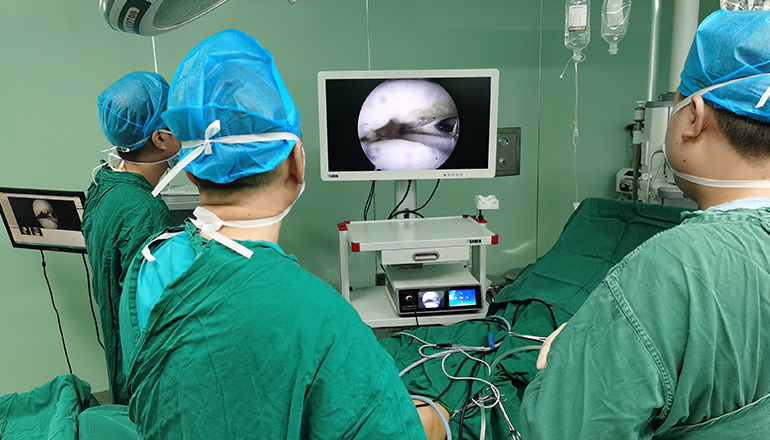- Shanghai, China
- [email protected]
- +86-21-58189111
Arthroscopy surgery is a minimally invasive surgical technique that is commonly used to diagnose and treat joint conditions. It involves the use of an arthroscope, a thin tube with a camera and light attached, which is inserted through a small incision to view the joint and guide surgical instruments. Arthroscopy surgery can be used to treat a wide range of joint problems, including:
Knee injuries: Arthroscopy surgery is commonly used to diagnose and treat knee injuries, such as meniscus tears, ACL injuries, and cartilage damage. The arthroscope allows the surgeon to view the inside of the joint and guide instruments to repair or remove damaged tissue.
Shoulder injuries: Arthroscopy surgery can also be used to diagnose and treat shoulder injuries, such as rotator cuff tears, labral tears, and frozen shoulder. The surgeon can use the arthroscope to visualize the inside of the joint and perform procedures such as repairing torn tendons or removing inflamed tissue.
Elbow injuries: Arthroscopy surgery can be used to diagnose and treat elbow injuries, such as tennis elbow and golfer's elbow. The arthroscope allows the surgeon to visualize the inside of the joint and guide instruments to remove inflamed tissue or repair damaged tendons.

Wrist injuries: Arthroscopy surgery can also be used to diagnose and treat wrist injuries, such as ligament tears and carpal tunnel syndrome. The surgeon can use the arthroscope to visualize the inside of the joint and perform procedures such as repairing torn ligaments or removing inflamed tissue.
Ankle injuries: Arthroscopy surgery can be used to diagnose and treat ankle injuries, such as cartilage damage and ankle impingement. The arthroscope allows the surgeon to visualize the inside of the joint and guide instruments to repair or remove damaged tissue.
Hip injuries: Arthroscopy surgery can also be used to diagnose and treat hip injuries, such as labral tears and hip impingement. The arthroscope allows the surgeon to visualize the inside of the joint and guide instruments to repair or remove damaged tissue.
In addition to these specific joint conditions, arthroscopy surgery can also be used for diagnostic purposes. It can help doctors determine the cause of joint pain, inflammation, or stiffness when other tests are inconclusive. Arthroscopy can also be used to take tissue samples for analysis, which can help diagnose conditions such as arthritis and infections.
Arthroscopy surgery is a versatile surgical technique that can be used to diagnose and treat a wide range of joint conditions. It offers many benefits over traditional open surgery, including less invasiveness, shorter recovery time, reduced pain, improved accuracy, reduced risk of complications, outpatient procedure, and cost-effectiveness. It is a safe and effective way to improve joint health and mobility and can greatly improve a patient's quality of life.
As technology continues to advance, the applications of arthroscopy surgery are expected to expand even further. New techniques, such as three-dimensional imaging, virtual reality, and robotics, are being developed to enhance the accuracy and precision of arthroscopy surgery. This will allow surgeons to perform even more complex procedures with greater confidence and better outcomes.
Another area where arthroscopy surgery is being applied is in the field of sports medicine. Athletes who suffer from joint injuries can benefit greatly from arthroscopy surgery, as it allows for a faster recovery time and a quicker return to their sport. Arthroscopy surgery is commonly used in the treatment of sports-related injuries such as ACL tears, rotator cuff tears, and ankle sprains.
Overall, arthroscopy surgery is a valuable tool for the diagnosis and treatment of joint conditions. It offers many advantages over traditional open surgery, including faster recovery time, reduced risk of complications, and improved accuracy. With ongoing advancements in technology and technique, arthroscopy surgery is likely to continue to play an important role in improving joint health and mobility for patients of all ages and activity levels.
Leave a Comments